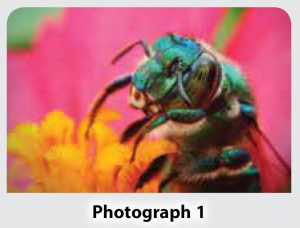Ethylene is a phytohormone that exists in the form of gas, is odourless and invisible.
Phytohormones control the ripening of plants.
(a) Mrs. Faridah placed an unripe key lime fruit together with a ripe banana in a closed container at room temperature.
(i) Justify Mrs. Faridah’s decision to put both fruits in the same closed container.
(ii) Predict what would happen to the key lime. Explain your answer.
(iii) What will happen to the key lime fruit if the container is placed in the fridge? Explain your answer.
(b) Suggest a method that can be used on fruits bound for export to delay ripening during transport. Justify your suggestion.
Answer:
(a)(i) This method can speed up the ripening of key lime.
(a)(ii)
The colour of the fruit changes from green to yellow and the fruit will also soften. The ripe banana releases ethylene. Ethylene breaks down the chlorophyll (green pigment) in the skin of the key lime fruit, turning it yellow. Ethylene also stimulates cellulase enzyme to hydrolyse the cell walls of key lime to turn the fruit soft.
(a)(iii)
The ripening will be delayed. The lower temperature in the fridge causes the enzymes involved to be less active.
(b)
First method – Vacuum-pack before exporting the fruit. Removal of air or oxygen prevents the production of ethylene. This will delay ripening during the journey.
Second method – Place the fruit in a refrigerator. Lower temperatures delay the ripening of fruit.

Photograph 1 shows insect pollination in your fruit orchard. You find your yield to be contaminated by high concentrations of insecticide. As a farmer, explain how you can overcome this issue and the steps you can take to increase the quality of fruits in your orchard.
Answer:
To prevent the use of pesticides, make sure no insects were involved in the pollination process. Fruit can be produced via parthenocarpy. Auxin is sprayed on the stigma to stimulate ovaries to develop into fruit without fertilisation. The fruit produced will be larger and seedless.